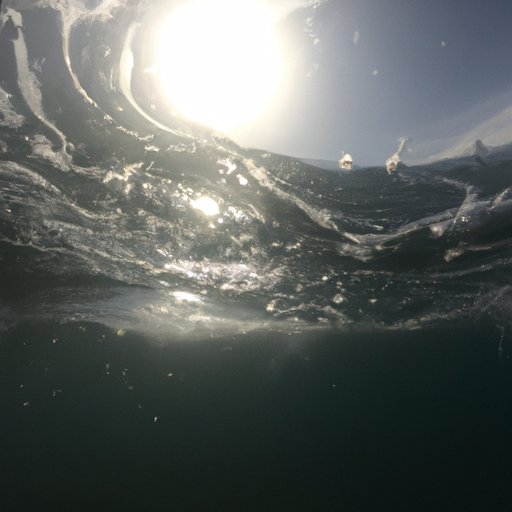Introduction
Tides are the rise and fall of sea levels caused by the combined forces of the moon, sun and the rotation of the Earth. The gravitational pull between these celestial bodies drives the ebb and flow of the ocean’s waters, a phenomenon that has been studied for centuries. In this article, we will explore the science behind how tides work and how they influence our lives.
Explaining the Basics of Tides: How Do They Work?
The physics behind tides is complex, but can be broken down into two main components: gravity and centrifugal forces. These forces create pressure differentials in the water which drive the movement of the tides. Additionally, the Coriolis force – a result of the Earth’s rotation – plays an important role in the direction of tidal movements.
The Physics Behind Tides
Gravity and centrifugal forces are the primary driving factors behind tides. The gravitational pull of the moon and sun cause the ocean to bulge towards them, creating high tides. At the same time, the centrifugal force of the Earth’s rotation pushes the water away from them, creating low tides.
The pressure differentials created by the moon and sun’s gravitational pull cause the water to move in different directions. This is why the tide moves in a circular pattern around the globe, with one side experiencing high tide while the other experiences low tide.
The Coriolis force also plays an important role in the movement of tides. This force is a result of the Earth’s rotation, which causes the tides to move in a clockwise direction in the Northern Hemisphere and counterclockwise in the Southern Hemisphere.
A Scientific Breakdown of Tidal Movement
Tidal ranges vary based on location and season. The highest tides, known as spring tides, occur when the moon and sun are aligned. During neap tides, the moon and sun are at right angles to each other, causing the tidal range to be much lower.
Tides are strongest during full moons and new moons, when the gravitational pull is at its peak. During these phases, the difference between high and low tides is greater than usual. In some areas, such as the Bay of Fundy in Canada, the tidal range can be more than 16 meters (52 feet) – the highest in the world.
The Physics Behind Tides: How Does It Impact Our Lives?
Tides have a significant impact on human activity and the environment. Shipping vessels rely on the timing and strength of tides to navigate waterways, while fishermen use them to determine the best times to cast their nets. Coastal areas are affected by the rise and fall of the sea level, which can lead to flooding during high tides.
Environmental factors, such as wind and atmospheric pressure, can also affect tides. Wind can push the water in different directions, while atmospheric pressure can cause changes in the tide’s height. These factors can make predicting tides difficult, as they are not always consistent.

Understanding the Causes of Tide Cycles
The moon and sun are the primary drivers of tide cycles. The gravitational pull of these celestial bodies creates the bulges of water that cause the rise and fall of the sea level.

Examining the Effects of the Moon and Sun on Tides
Lunar tides are caused by the gravitational pull of the moon. As the moon orbits the Earth, its gravitational pull causes the water to bulge towards it. This creates a high tide on the side of the Earth facing the moon, and a low tide on the opposite side.
Solar tides are caused by the gravitational pull of the sun. Just like lunar tides, the sun’s gravitational pull causes the water to bulge towards it, resulting in a high tide on the side of the Earth facing the sun, and a low tide on the opposite side.

Investigating the Relationship Between Ocean Currents and Tides
Ocean currents and tides are closely related. Currents can have an effect on the height and timing of tides, as they can cause the water to move in different directions. Similarly, tides can affect ocean currents, as they can cause changes in the direction and speed of the current.
Conclusion
Tides are driven by the gravitational pull of the moon and sun, as well as the Earth’s rotation. They have a significant impact on human activity and the environment, and understanding their causes and effects is essential for predicting and responding to them. Ocean currents also play an important role in the movement of tides, as they can cause changes in the direction and speed of the tide.
This article has explored the science behind how tides work and how they influence our lives. By understanding the physics behind tides, we can better predict and prepare for their effects.
(Note: Is this article not meeting your expectations? Do you have knowledge or insights to share? Unlock new opportunities and expand your reach by joining our authors team. Click Registration to join us and share your expertise with our readers.)
